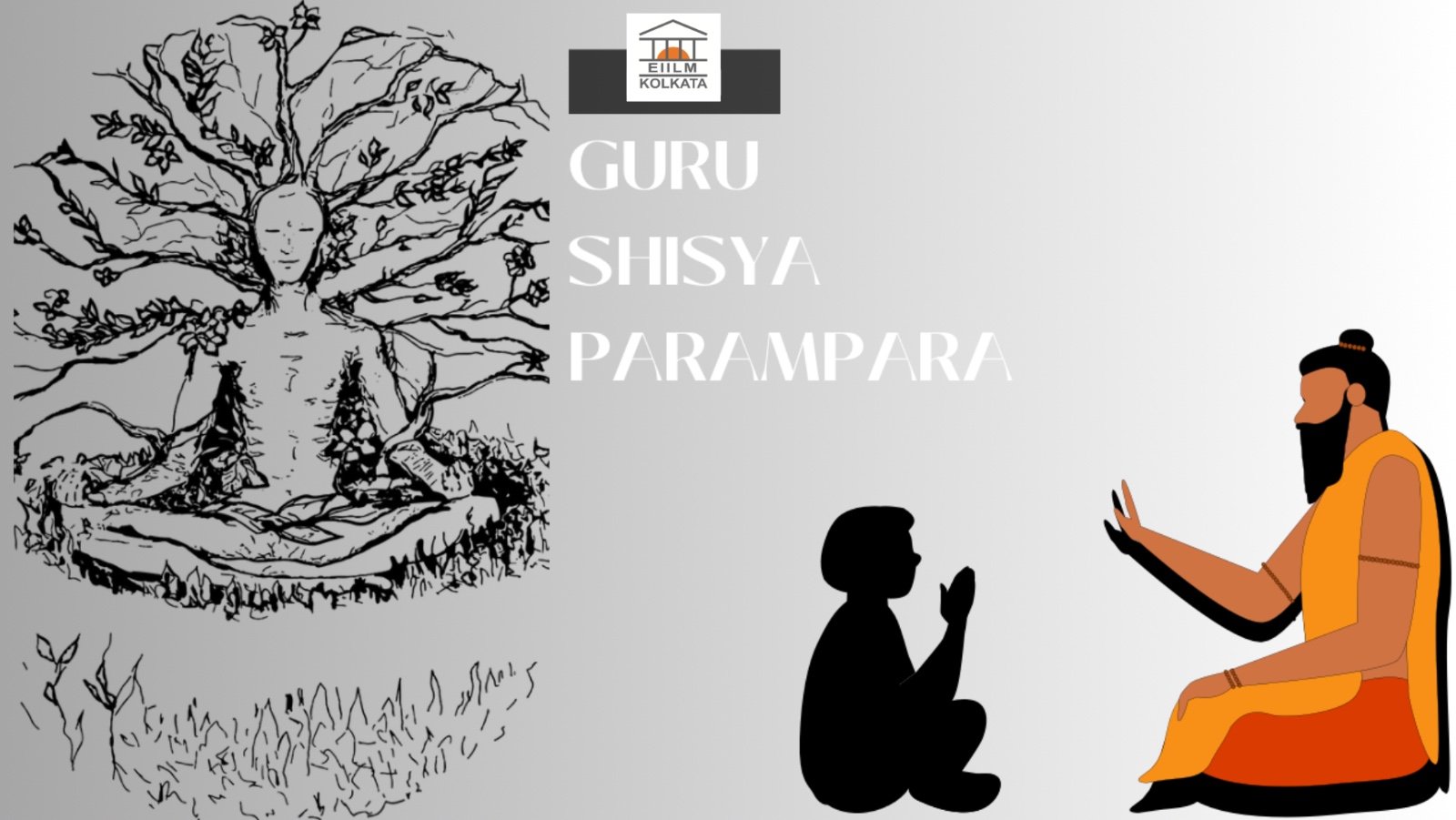In the tapestry of human history, certain educational traditions stand out for their unique approach to knowledge transmission. One such system is the Guru Shishya Parampara, a Sanskrit term meaning “lineage from teacher (guru) to disciple (shishya).” This ancient Indian tradition, practiced for millennia, transcends mere education, fostering a profound spiritual and intellectual bond between teacher and student.
The Essence of the Parampara
At the heart of the Guru Shishya Parampara lies the concept of guru, which goes beyond the conventional notion of a teacher. A guru is a revered mentor, a guide who possesses not just knowledge but also wisdom gleaned through experience and self-realization. The shishya, the disciple, is not a passive learner but an active participant, approaching the guru with utmost respect, devotion, and a thirst for knowledge.
The Gurukula: A Home for Learning
Traditionally, learning took place in a gurukula, the residence of the guru. The shishya lived alongside the guru, becoming part of the family. This immersive environment fostered a close relationship, allowing the shishya to not only learn theoretical concepts but also observe the guru’s daily life, imbibing their values and way of living.
The Learning Process: Beyond Textbooks
The Guru Shishya Parampara emphasizes a holistic approach to learning. Knowledge wasn’t confined to textbooks; it encompassed various aspects of life. Here’s a glimpse into this unique pedagogy:
- Oral Tradition: Knowledge was primarily transmitted orally. The shishya listened attentively, absorbing the guru’s words and interpreting them with their own understanding. This interactive process fostered critical thinking and encouraged deep reflection.
- Practical Application: Learning wasn’t just theoretical. The shishya assisted the guru in daily chores, observed rituals, and participated in discussions. This practical application solidified theoretical knowledge and instilled discipline.
- Character Development: The guru focused not just on intellectual growth but also on the shishya’s character development. Values like honesty, compassion, self-discipline, and respect were emphasized, shaping the shishya into a well-rounded individual.
Beyond Religious Boundaries
Though the Guru Shishya Parampara finds its roots in Hinduism, its influence extends beyond religious boundaries. It has been a cornerstone of learning in Jainism, Sikhism, and even some Buddhist traditions. The core principles – a revered teacher, a dedicated disciple, and a holistic learning approach – have resonated across various schools of thought.
The Relevance of Guru Shishya Parampara in the Modern World
In our fast-paced, technology-driven world, the Guru Shishya Parampara offers valuable lessons:
- Importance of Mentorship: In a world saturated with information, having a trusted guide who can provide personalized learning and support is invaluable.
- Focus on Character: Educational systems often prioritize academic achievement, neglecting character development. The Guru Shishya Parampara emphasizes the importance of both, nurturing well-rounded individuals.
- Active Learning: The shishya’s active participation in the learning process fosters deeper understanding and retention compared to passive learning methods.
Different Paths, One Goal
The Guru-Shishya Parampara transcends specific disciplines. It can be found in various fields like music, dance, martial arts, yoga, and even traditional medicine. While the content of learning differs, the core principles of dedication, respect, and personalized guidance remain constant.
Beyond Instruction: A Spiritual Transmission
While knowledge transfer is certainly a part of the Guru-Shishya Parampara, it’s not the sole purpose. This tradition emphasizes a deeper connection, a spiritual transmission that goes beyond words and textbooks. The Guru acts as a guide, mentor, and even a mirror, reflecting the Shishya’s true potential.
The Sole Connection: Shraddha (Devotion)
This profound connection is built on a foundation of Shraddha, a Sanskrit word often translated as devotion or faith. Shraddha isn’t blind obedience; it’s a deep respect and reverence for the Guru’s wisdom and guidance. It’s the Shishya’s unwavering belief in the Guru’s ability to lead them on the path of self-discovery.
Why Shraddha Matters
Shraddha fuels the Shishya’s dedication and perseverance. It allows them to delve into esoteric teachings, embrace unfamiliar practices, and face inner challenges. With unwavering Shraddha, the Shishya becomes receptive to the subtle wisdom the Guru imparts, not just through words, but through actions, energy, and even silence.
Benefits of Shraddha-based Connection
This unique connection fosters an environment conducive to immense personal growth. Here’s how:
- Unwavering Motivation: Shraddha fuels the Shishya’s motivation to overcome obstacles and strive for excellence in their chosen field.
- Openness to Learning: With unwavering faith, the Shishya becomes receptive to unconventional teachings and practices, fostering deeper understanding.
- Self-Transformation: The Guru, acting as a mirror, helps the Shishya identify their strengths and weaknesses, paving the way for transformation.
- Spiritual Awakening: Through a combination of devotion, practice, and guidance, the Shishya progresses on their spiritual journey.
Continuing the Legacy
While the traditional form of Guru-Shishya Parampara faces challenges in the modern world, its essence remains relevant. Mentorship programs, personalized learning initiatives, and even online communities can embody the spirit of this ancient tradition. By understanding and appreciating the Guru-Shishya Parampara, we can enrich our own educational journeys and create new pathways for knowledge transmission that bridge the past with the present.


